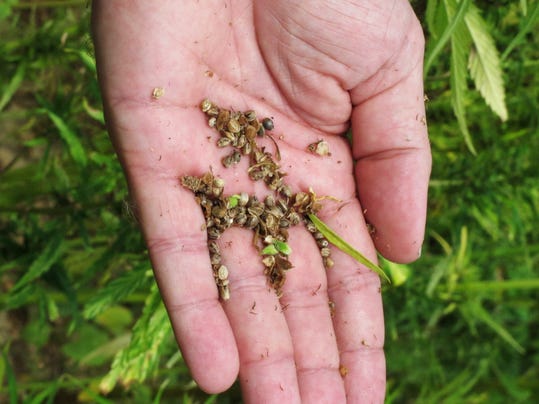Posted: Thursday, January 15, 2015 11:00 am
In 1914, newspaper magnate William Randolph Hearst mounted a yellow-journalism crusade to demonize the entire genus of cannabis plants. Why? To sell newspapers, of course, but also because he was heavily invested in wood-pulp newsprint, and he wanted to shut down competition from paper made from hemp – a species of cannabis that is a distant cousin to marijuana but produces no high.
Hearst simply lumped hemp and marijuana together as the devil’s own product, and he was not subtle about generating public fear of all things cannabis. As Mother Jones reported in 2009, Hearst’s papers ran articles about “reefer-crazed blacks raping white women and playing ‘voodoo satanic’ jazz music.”
Actually, while hemp had been a popular and necessary crop for decades before the crackdown on all cannabis plants, marijuana was largely unknown in America at the time and little used, but its exotic name and unfamiliarity made it an easy target for fear mongers. The next wave of demonization came in 1936 with the release of an exploitation film classic, “Reefer Madness.” It was originally produced by a church group to warn parents to keep their children in check, lest they smoke pot – a horror that, as the film showed, would drive kids to rape, manslaughter, insanity and suicide.
Then Congress enthusiastically climbed aboard the anti-pot political bandwagon, passing a law that effectively banned the production, sale and consumption of marijuana and by default hemp. Hearst finally got his way, and the production of cannabis in the U.S. was outlawed. Signed by FDR on Aug. 2, 1937, this federal prohibition remains in effect today. Although it has been as ineffectual as Prohibition, the 1919-1933 experiment to stop people from consuming “intoxicating liquors,” this ban, for the most part, continues despite its staggering costs.
Until recent years, prohibitionists had been able to intimidate most reform-minded politicians with the simple threat to brand them as soft on drugs. But finally, with the help of some reform-minded activists and the general public, our politicians are starting to come to their senses on cannabis.
At the state level, 32 states have legalized medical marijuana in some form or another. And Colorado, Washington, Alaska and Oregon have legalized recreational uses of marijuana. While these are huge steps, what is truly remarkable is what has taken place in Congress just in the last year.
Tucked deep in the 2013 Farm Bill was a little amendment introduced by Representatives Jared Polis, a Democrat from Colorado, Earl Blumenauer, a Democrat from Oregon, and Thomas Massie, a Republican from Kentucky. The amendment allows universities, colleges and State Agriculture Departments to grow industrial hemp for research in states that have made it legal to do so. California, Hawaii, Kentucky, Maine, Maryland, Montana, North Dakota, Oregon, Vermont and West Virginia already have laws on their books to allow for this.
The most recent step forward to come out of Congress was in the last-minute federal spending bill in December. Democratic Rep. Sam Farr and Republican Rep. Dana Rohrbacher, both from California, included a provision in the bill to stop the DEA and DOJ from going after states that legalize medical marijuana. They can no longer conduct raids on licensed marijuana outlets that service patients who use marijuana to treat everything from the side effects of cancer treatments to epileptic seizures. The marijuana farmers are now safe to cultivate the plant, and the patients themselves are now safe from prosecution for possessing it.
Marijuana Policy Project and Vote Hemp are two organizations that are working tirelessly with the public and our lawmakers to change the laws and regulations surrounding cannabis. To learn more about how these groups are making a difference and to help get involved, connect with them at www.mpp.org and www.VoteHemp.com.


![clip_image002[4] clip_image002[4]](https://usindustrialhemp.files.wordpress.com/2015/01/clip_image0024_thumb.jpg?w=863&h=1118)
![clip_image004[4] clip_image004[4]](https://usindustrialhemp.files.wordpress.com/2015/01/clip_image0044_thumb.jpg?w=1176&h=1525)
![clip_image006[4] clip_image006[4]](https://usindustrialhemp.files.wordpress.com/2015/01/clip_image0064_thumb.jpg?w=1181&h=1515)






 1GU8nbZBjvSHAxbDhvcGfCQ5i2bWeACwgU
1GU8nbZBjvSHAxbDhvcGfCQ5i2bWeACwgU